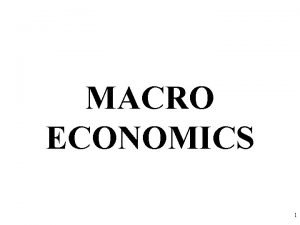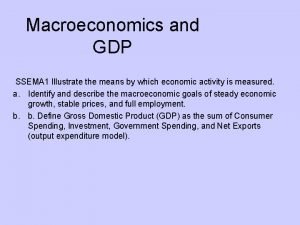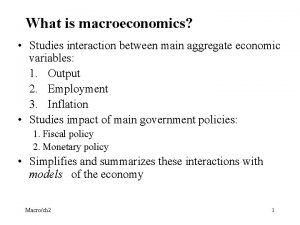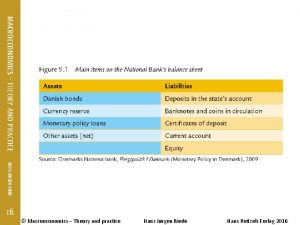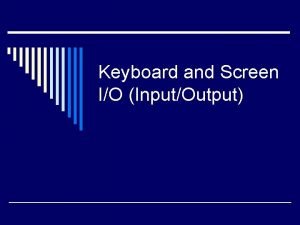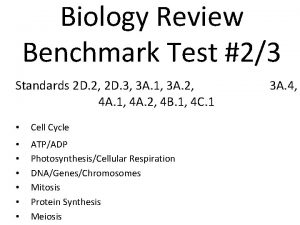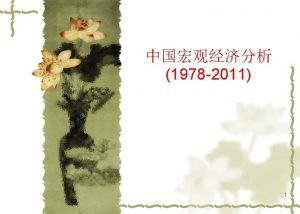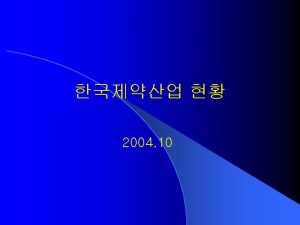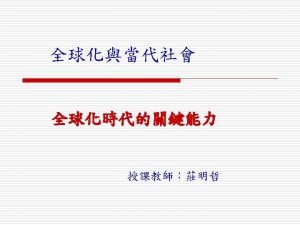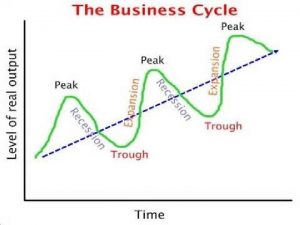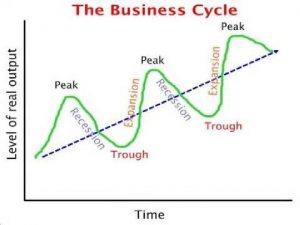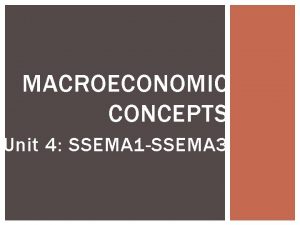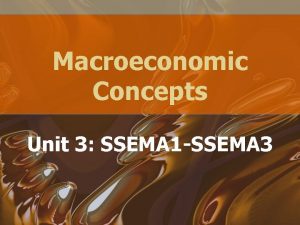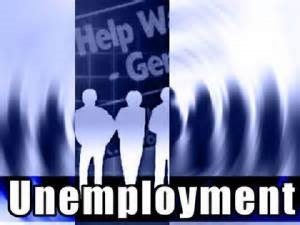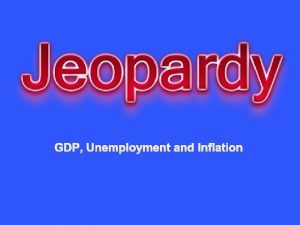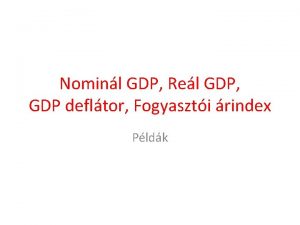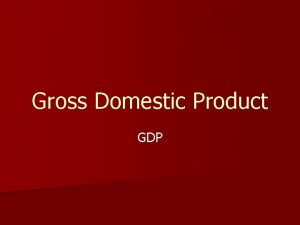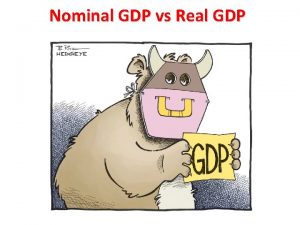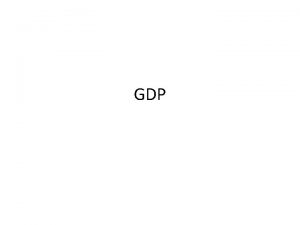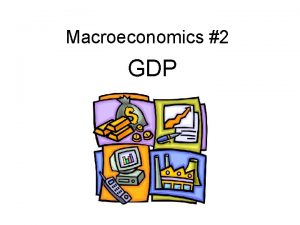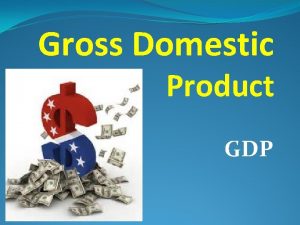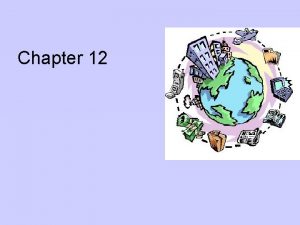Macroeconomics and GDP SSEMA 1 Illustrate the means


















- Slides: 18

Macroeconomics and GDP SSEMA 1 Illustrate the means by which economic activity is measured. a. Identify and describe the macroeconomic goals of steady economic growth, stable prices, and full employment. b. b. Define Gross Domestic Product (GDP) as the sum of Consumer Spending, Investment, Government Spending, and Net Exports (output expenditure model).

Macroeconomics and GDP • What is Macroeconomics ? the part of economics concerned with largescale or general economic factors, such as interest rates and national productivity. • What is an aggregate? As a whole • What are Macroeconomic issues? • Unemployment, GDP, Inflation, Economic growth, Monetary Policy, Fiscal Policy

What are measures of Economic Growth? What is 'Gross Domestic Product - GDP' Gross domestic product (GDP) is the monetary value of all the finished goods and services produced within a country's borders in a specific time period • Gross National Product (GNP) • GNP is a measure of the market value of all goods and services produced by Americans in one year.

What is included in GDP? Categories C- Personal Consumption Expenditure Consumer purchases Durable & Nondurable goods I- Gross Investment Total value of all capital goods. Changes in the dollar value of business inventories. G-Government Purchases of goods and services I. e. - national defense, highways, public education. X-M Net export of goods and services Includes the value of goods and services made in the U. S. but sold elsewhere. Does not include the value of goods made in other countries but consumed here. (These are subtracted out. ) Can be a positive or negative number.

Excluded from GDP • GDP does not take into account certain economic activities, such as: 1. Nonmarket Activities : GDP does not measure goods and services that people make or do themselves, such as caring for children, mowing lawns, or cooking dinner. GDP ignores: household work, barter, financial transactions such as buying stock, and transfer payments such as Social Security. 2. Transfer payments: payments from the government like Social Security or welfare. 3. Securities payments- income on stocks or bonds.

4. Underground (black market): includes illegal activities as well as questionable, or gray, ones (not quite legal, but not exactly illegal). Ex. Cash only transactions that never get reported to the IRS: mowing lawns, babysitting, garage sales, flea markets, or unlicensed businesses working out of homes. What it the economic effect of a recession on the underground economy? It tends to grow when the economy is weak. Cash transactions replace reported purchases and income.

5. Not sold this year or secondhand sales: If a product is not sold it cannot be included in this year’s GDP. When a product is resold from one person to another no new wealth is created. Therefore, only the original sale is included in GDP. 6. Intermediate Products- products used to make other products • E. Example: A tomato in a hamburger.

Understanding Checkpoint: Answer the questions on the worksheet given to you at the beginning of class.

Real and Nominal GDP • Nominal GDP is GDP measured in current prices. It does not account for price level increases from year to year. Nominal and Real GDP Year 1 Nominal GDP Suppose an economy‘s entire output is cars and trucks. This year the economy produces: 10 cars at $15, 000 each = $150, 000 + 10 trucks at $20, 000 each = $200, 000 Total = $350, 000 Since we have used the current year’s prices to express the current year’s output, the result is a nominal GDP of $350, 000. • Real GDP is GDP expressed in constant, or unchanging, dollars. Year 2 Nominal GDP In the second year, the economy’s output does not increase, but the prices of the cars and trucks do: 10 cars at $16, 000 each = $160, 000 + 10 trucks at $21, 000 each = $210, 000 Total = $370, 000 This new GDP figure of $370, 000 is misleading. GDP rises because of an increase in prices. Economists prefer to have a measure of GDP that is not affected by changes in prices. So they calculate real GDP. Year 3 Real GDP To correct for an increase in prices, economists establish a set of constant prices by choosing one year as a base year. When they calculate real GDP for other years, they use the prices from the base year. So we calculate the real GDP for Year 2 using the prices from Year 1: 10 cars at $15, 000 each = $150, 000 + 10 trucks at $20, 000 each = $200, 000 Total = $350, 000 Real GDP for Year 2, therefore, is $350, 000

Factors Influencing GDP Aggregate Supply/Aggregate Supply Aggregate Demand Equilibrium • Aggregate supply is • Aggregate demand is • By combining the total amount of aggregate supply the amount of goods curves and aggregate goods and services in and services that will demand curves, the economy be purchased at all equilibrium for the available at all possible price levels. macroeconomy can be possible price levels. • Lower price levels will determined. • As price levels rise, increase aggregate supply demand as rises and real GDP consumers’ purchasing increases. power increases.

Measuring Economic Growth The basic measure of a nation’s economic growth rate is the percentage change of real GDP over a given period of time. GDP and Population Growth- In order to account for population increases in an economy, economists use a measurement of real GDP per capita. It is a measure of real GDP divided by the total population. • Real GDP per capita is considered the best measure of a nation’s standard of living. GDP and Quality of Life- Like measurements of GDP itself, the measurement of real GDP per capita excludes many factors that affect the quality of life.

GDP Comparison

What Is a Business Cycle? A business cycle is a macroeconomic period of expansion followed by a period of contraction. • A modern industrial economy experiences cycles of goods times, then bad times, then good times again. • Business cycles are of major interest to macroeconomists, who study their causes and effects. • There are four main phases of the business cycle: expansion, peak, contraction, and trough.

Phases of the Business Cycle Expansion- An expansion is a period of economic growth as measured by longterm rise in real GDP. Peak- When real GDP stops rising, the economy has reached its peak, the height of its economic expansion. Contraction- Following its peak, the economy enters a period of contraction, an economic decline marked by a fall in real GDP. A recession is a prolonged economic contraction (6 months or more). An especially long or severe recession may be called a depression. Trough- The trough is the lowest point of economic decline, when real GDP stops falling.

What Keeps the Business Cycle Going? • Business cycles are affected by four main economic variables: Business Investment When an economy is expanding, firms expect sales and profits to keep rising, and therefore they invest in new plants and equipment. This investment creates new jobs and furthers expansion. In a recession, the opposite occurs. Interest Rates and Credit When interest rates are low, companies make new investments, often adding jobs to the economy. When interest rates climb, investment dries up, as does job growth. Consumer Expectations Forecasts of a expanding economy often fuel more spending, while fears of recession tighten consumers' spending. External Shocks External shocks, such as disruptions of the oil supply, wars, or natural disasters, greatly influence the output of an economy.

Business Cycles- What is happening to the following during expansion and contraction? Expansion Real GDP Unemployment Businesses Production Interest Rates Consumer Spending Contraction

Business Cycles- What is happening to the following during expansion and contraction? Expansion Contraction Real GDP Growing Negative Unemployment Decreasing Increasing Businesses Expanding Closing Production Increasing Decreasing Interest Rates Low High Consumer Spending Increasing Decreasing

Historical Business Cycle Fluctuations The Great Depression – The Great Depression was the most severe downturn in the nation’s history. – Between 1929 and 1933, GDP fell by almost one third, and unemployment rose to about 25 percent. Later Recessions – In the 1970 s, an OPEC embargo caused oil prices to quadruple. This led to a recession that lasted through the 1970 s into the early 1980 s. U. S. Business Cycles in the 1990 s – Following a brief recession in 1991, the U. S. economy grew steadily during the 1990 s, with real GDP rising each year.
 Ssema
Ssema Nominal gdp
Nominal gdp How to calculate nominal gdp
How to calculate nominal gdp Gross domestic product macroeconomics
Gross domestic product macroeconomics What is included in gdp
What is included in gdp Aggregate demand table
Aggregate demand table Triangle quadrilateral pentagon hexagon
Triangle quadrilateral pentagon hexagon Meta means change and morph means heat
Meta means change and morph means heat Biodiversity conservation definition
Biodiversity conservation definition Meta means and morphe means
Meta means and morphe means Venn diagram of macroeconomics and microeconomics
Venn diagram of macroeconomics and microeconomics Venn diagram of macroeconomics and microeconomics
Venn diagram of macroeconomics and microeconomics New classical macroeconomics
New classical macroeconomics Nicepp
Nicepp Macroeconomics theory and practice
Macroeconomics theory and practice New classical and new keynesian macroeconomics
New classical and new keynesian macroeconomics Marzano's taxonomy
Marzano's taxonomy Keyboard.next java
Keyboard.next java Meiosis 1
Meiosis 1

